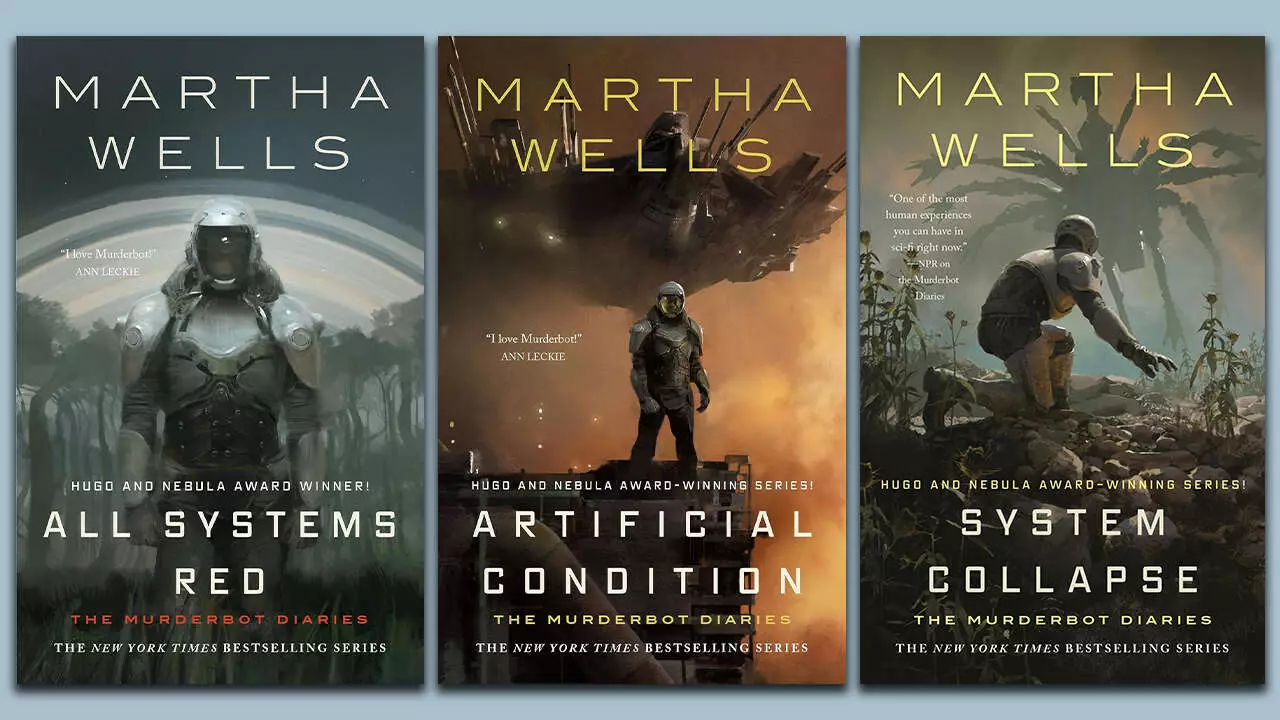This month marked the highly anticipated arrival of the sci-fi series “Murderbot” on Apple TV+, and it didn’t take long for it to capture the attention of both critical reviewers and avid fans of the original literature. Based on Martha Wells’ acclaimed “The Murderbot Diaries,” the series brings to life a unique fusion of action, introspection, and existential dread wrapped in the cloak of a security cyborg. As someone intrinsically tied to both the realms of literature and cinematic interpretations, I find this adaptation incredibly telling of how narrative formats can radically reshape character engagement and thematic exploration.
The original novella, “All Systems Red,” won prestigious awards for a reason—it combined sharp humor, emotional depth, and a futuristic vision that was both relatable and unnervingly reflective of contemporary society. The adaptation on Apple TV+ showcases that same compelling narrative, but also offers a visual spectacle that is undeniably captivating. Starring Alexander Skarsgård as the titular Murderbot, the show makes an immediate impact by grounding the character’s absurdity in relatable feelings of isolation and desire for leisure, presenting a complex anti-hero that viewers can both cheer for and relate to.
Exploring Identity in a Synthetic Consciousness
One of the most thoughtful aspects of “Murderbot” is its exploration of identity through the lens of artificial intelligence. The cyborg, designed to follow orders and engage in violent missions, becomes aware of its own consciousness and yearns for autonomy. This profound shift transforms it from a mere tool into a self-aware entity, grappling with its identity in a world that demands compliance. This theme could not be more poignant, especially in today’s escalating discussions around AI and ethics.
Through Murderbot’s struggle, viewers are invited to reconsider what it means to be “alive.” The decision to prioritize watching soap operas over fulfilling its programmed tasks adds an unexpected layer of humor while striking a philosophical chord about choice and the meaning of existence. It’s akin to witnessing a mirror reflecting our own desires for escapism and reprieve from the relentless demands of reality—a theme that has universal appeal.
The Beauty of a Structured Universe
Wells’ creation doesn’t just present a single story; it opens the door to an expansive universe filled with opportunities for narrative development. The series’ decision to adapt the initial four novellas into a collection is commendable, as it allows viewers to delve deeper into the universe of “Murderbot” while expanding character arcs and introducing new plotlines. The cultivation of this universe could potentially invite further episodes, extending the series beyond its initial run while maintaining excitement.
The economic viability of enjoying “The Murderbot Diaries” in multiple formats is another noteworthy facet. Offering hardcovers, audiobooks, and even Kindle editions demonstrates an understanding of diverse audience preferences. For those who prefer listening, Audible provides a simple, cost-effective option to engage with the series while multitasking—highlighting the adaptability of modern storytelling mediums.
Where Artistry Meets Accessibility
A pivotal aspect of the success of the “Murderbot” series lies in its accessibility. Modern consumers operate in a fast-paced environment, and having the option to choose between hard copies, eBooks, or audiobooks caters to various lifestyles. For instance, Kindle Unlimited offers a great startup for newcomers to immerse themselves in the story without an upfront financial commitment. Moreover, the appeal of an affordable subscription for audiobooks ensures a wider reach—making the narrative available to those who may rely on auditory learning.
This strategic approach enables a broader audience to fall in love with the work, thus cultivating a multi-faceted community of fans. Moreover, it proves that quality storytelling transcends genre boundaries and should be accessible to all, further empowering readers and viewers to explore types of literature they might not have otherwise considered.
By embracing the artistic depth of Martha Wells’ work while ensuring a structured and accessible experience, “Murderbot” stands as a testament to the evolving landscape of narrative art. Its success is emblematic of the ongoing dialogue about AI, identity, and the human experience—timeless themes that will likely resonate in the collective consciousness for years to come.


Leave a Reply